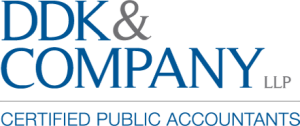
Tax Court- Loss Deductions By Real Estate Professionals
A recent tax court decision demonstrates the importance of a taxpayer keeping a log to prove the 750 hours threshold for real estate professional status.
On October 15, 2015, the Tax Court issued an opinion in case, DORIS SIMMONS-BROWN AND JOE BROWN, Petitioners v. COMMISSIONER (Docket No. 21636-13S).
The case involves taxpayers Joe Brown and Doris Simmons-Brown. Joe Brown, had a construction business in which he worked approximately 15 hours per week (780 hours annually). Joe’s wife, Dorris Simmons-Brown owned a four family rental property. Joe and his wife lived in the first two units of the property while the top two units were rented out. Joe did not own any rental property in his own name.
According to the court decision, Joe spent more than 500 hours per year repairing and maintaining the two rental units.
The key point from the case is that the taxpayer kept a detailed, contemporaneous log proving the more 500 hours he spent working on the rental property units and 780 hours he spent in his construction business.
On their joint tax return for 2010 and 2011, Joe and his wife claimed more than $30,000 of annual non-passive losses from the rental units as real estate professionals. The IRS claimed that the losses related to a passive activity and disallowed the losses, and also assessed a deficiency penalties and interest.
The Tax Court ruled in favor of the taxpayer and allowed the losses based on the grounds that the taxpayer materially participated in the real estate trade or businesses as a real estate professional.
Rental activity is generally treated as a passive activity regardless of whether the taxpayer materially participates. However, there is an exception to this rule if the taxpayer is considered to be a real estate professional.
A taxpayer meets the requirements to be treated as a real estate professional if:
- More than one-half of the personal services performed in trades or businesses by the taxpayer during such taxable year are performed in real property trades or businesses in which the taxpayer materially participates, and
- Such taxpayer performs more than 750 hours of services during the taxable year in real property trades or businesses in which the taxpayer materially participates.
In the case of a joint return, these requirements are met if either spouse separately satisfies them.
Doris Brown kept a contemporaneous activity log in the form of a spreadsheet, which detailed the amount of time that Joe Brown spent working on the rental property. In addition, it was determined that Joe Brown spent an average of 15 hours per week working at a small construction contracting business that he owned.
The Tax Court reviewed Doris Brown’s spreadsheet and determined that it indeed qualified as a contemporaneous activity log.
Mr. Brown spent an average of 780 hours per year performing services for his construction contracting business for both 2010 and 2011. All of his activities for both years were spent in real property trades or business. The activities for the rental property and the construction contracting business are considered to be real property trades or businesses. Therefore, the Browns were treated as real estate professionals for both years at issue.
This case is one more example where the IRS continues to challenge deductions taken under Section 469’s real estate professional rules and how important it is that the taxpayer have a contemporaneous log to support the 500-hour and 750-hour thresholds.
TC Summary Opinion 10 15 2015 Click Here for Docket
